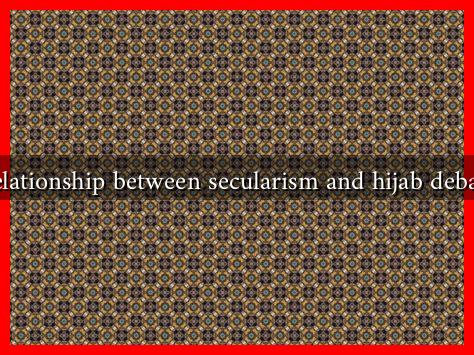-
Table of Contents
The Relationship Between Secularism and the Hijab Debate in Europe
In recent years, the hijab debate has emerged as a significant topic of discussion across Europe, intertwining with the broader discourse on secularism. This relationship raises questions about religious freedom, cultural identity, and the role of the state in regulating personal expression. This article explores the complexities of this relationship, examining how secularism influences the hijab debate and the implications for Muslim women in Europe.
Understanding Secularism in Europe
Secularism, in its essence, refers to the separation of religion from political, social, and educational institutions. In Europe, secularism has been a foundational principle, particularly in countries like France, which has a long-standing tradition of laïcité (strict secularism). This principle aims to ensure that religious beliefs do not interfere with public life and governance.
- Historical Context: The roots of secularism in Europe can be traced back to the Enlightenment, which emphasized reason and individual rights over religious authority.
- Legal Framework: Many European countries have laws that promote secularism, such as France’s 1905 law on the separation of church and state.
- Public Perception: Secularism is often viewed as a safeguard against religious extremism and a means to promote social cohesion.
The Hijab as a Symbol of Identity
The hijab, a headscarf worn by many Muslim women, is often seen as a symbol of religious identity and personal choice. However, it has also become a focal point in discussions about integration, multiculturalism, and women’s rights in Europe.
- Religious Expression: For many women, wearing the hijab is an expression of their faith and personal autonomy.
- Political Symbolism: The hijab can also be perceived as a political statement, representing resistance against Western norms and values.
- Gender Dynamics: The debate often intersects with discussions about feminism, autonomy, and the rights of women to choose how they express their identity.
Secularism and the Hijab Debate: A Complex Relationship
The relationship between secularism and the hijab debate is fraught with tension. On one hand, secularism advocates for a neutral public space free from religious symbols. On the other hand, this stance can be perceived as discriminatory against Muslim women who choose to wear the hijab.
- Legal Restrictions: Countries like France have implemented laws banning the wearing of hijabs in public schools and other state institutions, arguing that it preserves secularism.
- Public Opinion: Surveys indicate that a significant portion of the European population supports restrictions on religious symbols in public life, often citing concerns about integration and social cohesion.
- Case Studies: The 2010 French law banning the burqa in public spaces exemplifies how secularism can lead to legal restrictions on religious expression.
Implications for Muslim Women
The hijab debate has profound implications for Muslim women in Europe. While some women view the hijab as a source of empowerment, others feel that secular policies marginalize their choices.
- Empowerment vs. Oppression: The hijab can be a source of pride for many, but the debate often frames it as a symbol of oppression.
- Social Integration: Muslim women who wear the hijab may face challenges in social integration, employment, and education due to prevailing biases.
- Activism and Advocacy: Many Muslim women are actively advocating for their right to wear the hijab, emphasizing the importance of personal choice and freedom of expression.
Conclusion: Navigating the Future
The relationship between secularism and the hijab debate in Europe is complex and multifaceted. As Europe continues to grapple with issues of identity, integration, and religious freedom, it is crucial to foster a dialogue that respects both secular principles and individual rights. The hijab should not be viewed solely as a symbol of division but as a reflection of the diverse identities that contribute to the European tapestry.
Ultimately, the challenge lies in balancing the ideals of secularism with the need for inclusivity and respect for personal choices. As societies evolve, so too must the conversations surrounding secularism and religious expression, ensuring that all voices are heard and valued.
For further reading on secularism and its implications in Europe, you can visit European Parliament’s overview on secularism.


